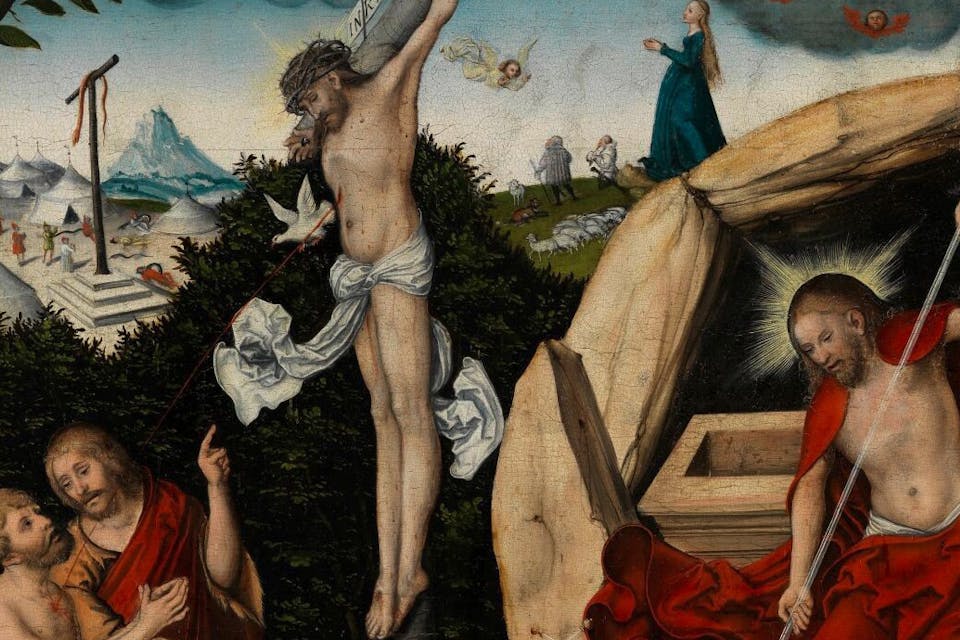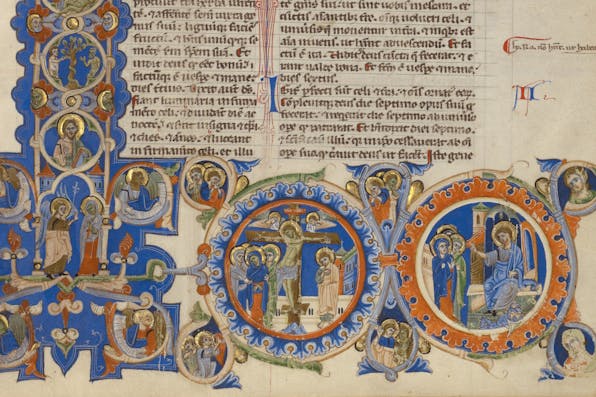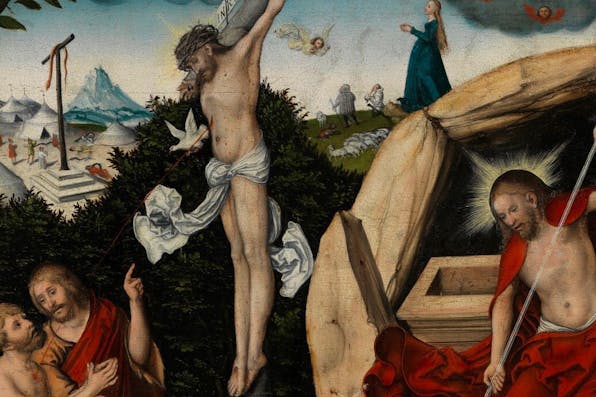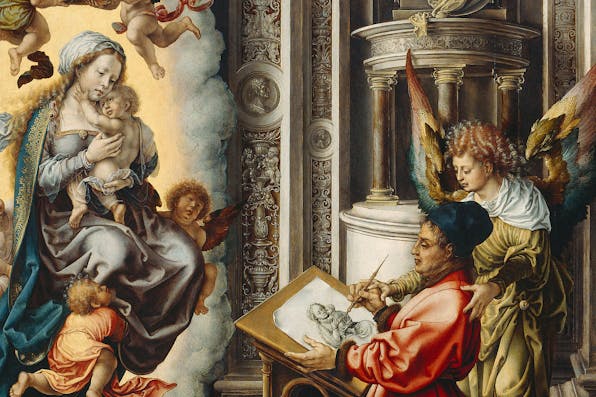
September 3, 2024
Twisted Tales: Christian Art Re-Presents the Hebrew Bible
Christian artists often employ a notion called typology, or prefiguration, where events from the Hebrew Bible eventually find rhymes within the later life of Jesus.
Jacob Wisse teaches the full range of Western art history at Yeshiva University to a committed Jewish audience, so it is only natural that he notes—for them and with them—how much the Hebrew Bible has played a role in European artworks. And stories from the Hebrew Bible have endured for a very good reason. They show a full range of characters with traits both virtuous and venal; their actions run the gamut from heroism to disgrace. Consider, for example, the contrasts across the life of David: first a youthful, unexpected triumph, then all aspects of kingship tainted by adultery and arranged homicide—and finally the grief of a lost, if rebellious son. Or the life of Jacob, who gains his sacred birthright over his older twin through outright deceit of his father, yet who personally wrestles with the divine, consequently giving his adopted name to the people Israel. For Jews, stories of the patriarchs, beginning with Abraham, make claims of a founding dynasty to a covenant with the divine, a dynasty, to be more specific, that participates in the divine’s mysterious plan. Wisse notes the specificity and power of those characters and stories for art. But he now turns his attention to something more: the question of how Christian artists responded to the same shared text of the Hebrew Bible, which they renamed the Old Testament.
Instead of on a peoplehood with a covenant, Christians focus on the fall of humanity and the Original Sin of Adam and Eve as the fundamental aspect of their take on the same story, an aspect requiring redemption through the ultimate sacrifice—presumably part of a similar divine plan—of Jesus on the cross. Thus, when Michelangelo’s Sistine Chapel ceiling in the Vatican (1508–12) begins with the days of Creation, it moves directly into the story of Adam and Eve and their expulsion from paradise for defying God’s commands. And Michelangelo ends his Sistine Chapel work with a vision of the end of time: a stern image of the Last Judgment (1536–41) by a Christ figure, implacably dooming damned souls in the presence of saints. Wisse takes up the question of why any Old Testament subjects would hold meaning in the face of this overwhelming Gospel emphasis on salvation through Jesus as the son of God.
It turns out that Christians regard the Hebrew Bible as prophecy and prologue for their “New” Testament. Theologically, they select Old Testament actions and passages that seem to anticipate this final Gospel realization, as if their younger religion was the promised fulfillment of the covenant with humanity in general. Think Handel’s Messiah in music—its libretto encapsulates various major biblical lines of text deemed to hold predictive value in retrospect, such as Isaiah 7:14, translated as “behold a virgin shall conceive and bear a son.” This doctrine, often encapsulated in the term “supersession,” asserts that Christianity is the rightful successor to Judaism for God’s special protection, and they choose stories the suggestively anticipate that culmination. As Wisse asserts, this allows Christians to fashion “an artistic tradition that is unimaginable without the Hebrew Bible and that can reveal deep truths about Hebrew Scripture and Jewish ideas.” But of course these truths come with a twist.


